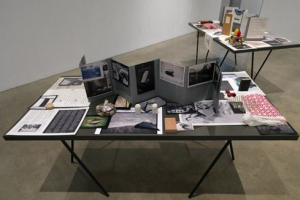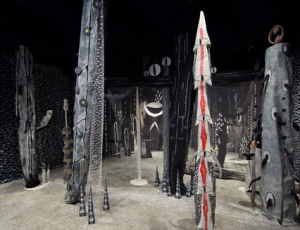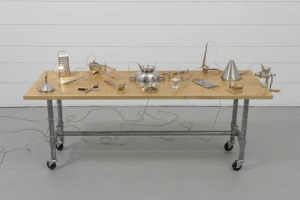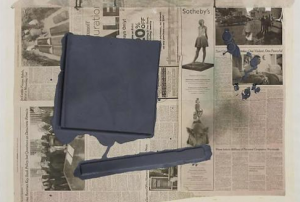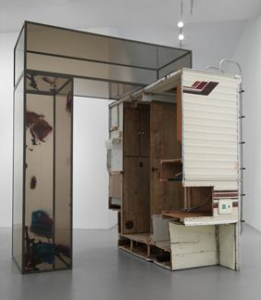
Sarah Braman’s trademark combinations of disparate materials in precarious arrangements achieve a new level of gravity with the incorporation of components from a cut-up camper. In her debut at Mitchell-Innes & Nash, hefty chunks of the vehicle act as both painting surface and gritty foil to the clean-cut cubes of gorgeous blue and purple Plexiglas to which they are sometimes conjoined. The resulting juxtapositions defy expectations as the funky, roughed-up trailer becomes impersonal, and the slick geometric elements charm with their transparent beauty.
In a sculpture near the gallery entrance, the back of the RV creates an archway with two Plexi boxes forming an L. Tinted the color of limousine windows, the latter are doodled with spray paint, recalling Sterling Ruby’s defaced pedestal pieces, but without the air of menace. If this treatment somewhat softens these cold, corporate forms, a lack of any trace of habitation within the camper does the opposite, making it makes seem less like a repository of past adventures, à la Mike Nelson’s airstream installation at 303 Gallery last spring, and more like one of Gordon Matta-Clark’s deconstructions of an abandoned place.
In a piece titled 8pm, a smaller fragment of the camper is sandwiched between two aquarium-like shapes, while a larger nearby structure in blue, pink and purple Plexi recalls an empty Damien Hirst shark tank crossed with an Anne Truitt. But it is in Braman’s misleadingly titled and exceedingly lively Coffin that viewers are finally offered the delayed gratification of imagining past lives. Here the Plexiglas takes something of a backseat to a segment of camper laid with a mirrored floor, creating a boudoir-like stage for memories.
Originally published in Time Out New York, issue 837, November 17-23, 2011.
